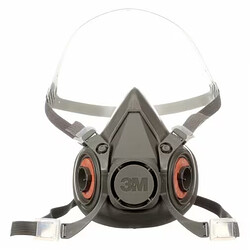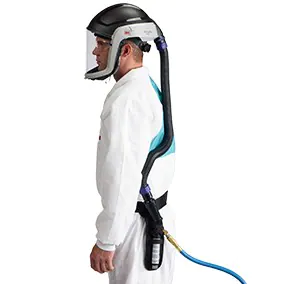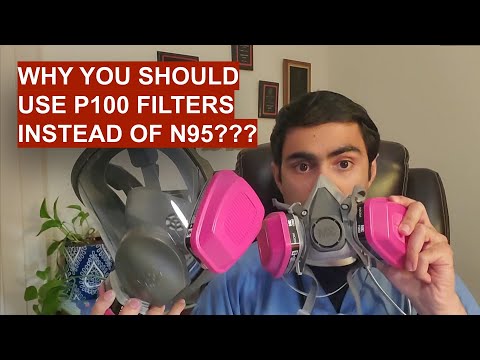Darth Vader forced his way into professional success while wearing a mask so we definitely shouldn’t be ashamed about our health decisions. But which mask is the best? Scientific publications show that:
- Elastomeric respirators hold their fit better than N95s. Without a proper fit, any mask will fail to filter effectively.
- Elastomeric respirators with a P100 filter catch aerosol-sized droplets better than N95s. The rating is 100% versus 95%.
Non-randomized controlled trial on fit (Barros et al.)
The study by Barros and colleagues compared elastomeric half-mask respirators (EHMR) versus N95s. They asked participants to perform CPR (chest compressions) and to report if they could taste Bitrex (denatonium benzoate) that was aerosolized into their fit-testing hood. The taste test indicated whether or not their mask retained its fit while the wearing was engaging in physical activity (CPR).
28% of the N95 group (18/64) tasted Bitrex while 0% of the elastomeric respirator group (0/36) tasted Bitrex. This led the authors to conclude:
Our results suggest that FFR fit during CPR is poor and that EMHRs provide superior fit, confirming
previous research.
[…]
The data suggest that the EMHR is more effective at preventing aerosol inhalation during strenuous clinical work and should be considered for preventing COVID-19 transmission.
Elastomeric respirator image (3M 6300) from the 3M website
Filtration efficiency
Gardner et al. (2013) tested the effectiveness of masks at filtering an aerosolized virus (MS2). Elastomeric respirators were superior by a magnitude- letting less than 0.03% through versus 2% for N95s:
The mean penetrations of viable MS2 through the N95 and P100 FFRs/cartridges were typically less than 2 and 0.03%, respectively, under all flow conditions.
Speech
Your speech will be slightly muffled and YOU HAVE TO TALK A LOT LOUDER. They are fine for brief conversations and not great for longer conversations.
Elastomeric respirators have an exhaust valve
The exhaust valve makes it easier to breathe. When you exhale, the valve is open and it doesn’t feel like you’re trying to exhale through a mask (unlike a surgical mask or N95). There are some concerns as to whether or not the exhaled air is being reasonably filtered so that others will not catch an infectious disease.
Howard et al. studied whether an elastomeric respirator could be viable for operating room settings. They concluded that they were just as effective at reducing sterile field contamination regardless or whether a surgical mask was worn over it.
Elastomeric respirators with or without mitigation are as effective as a surgical mask and N95 for reducing contamination at the sterile field in an operating room.
However, there may be conflicting data on this topic.
Powered air purifying respirators (PAPRs), CAPRs
These offer even better protection and retain their fit better than elastomeric respirators. However, they are costlier (upwards of $1-2K) and are more awkward to wear for everyday use. They are often seen in industrial use (e.g. for welding) and for medical use.
Tutorial on where to buy elastomeric respirators and how to check their fit
Elastomeric respirators cost less than US$50 on Ebay. See the following video by Rahoul Ahuja MD:
I hope this helps. Elastomeric respirators didn’t become that popular post-pandemic but they were always extremely popular in industrial/non-medical applications such as woodworking. They’re relatively more comfortable, cheap, and are better at filtering.



